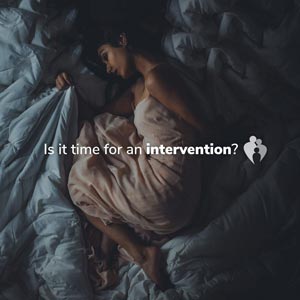A recent study conducted by researchers at Johns Hopkins Bloomberg School of Public Health revealed that 66 percent of patients who had been prescribed opioids kept their unused pills. According to experts, the misuse of these leftover pills are a large contributing factor in the current opioid epidemic.
Of the patients who kept their leftover pills, 20 percent admit to sharing them with friends or family who did not have prescriptions of their own. While they may or may not have had good intentions, it is important to remember that sharing prescription drugs is illegal.
Opioids Are Beneficial When Used as Directed
There is a popular misconception that patients prescribed opioids for treatment are long-term addicts who have created an epidemic, but this is simply not true. Only 10 percent of people addicted to opioid painkillers began their treatment with a prescription.
Opioid painkillers are effective medications that can effectively treat both chronic pain and the intense pain that can come from an injury or after surgery. Most people use them for the directed period and then stop using them. This scenario reflects the way patients should take their opioid pills. The truth of the matter is that the epidemic has developed from the misuse of opioid drugs.
Misuse of Opioids
Misuse of any prescription drug is defined as “the use of a drug for purposes for which it was not intended.” Two prime examples of prescription drug misuse are:
- When a patient with a prescription keeps his or her leftover, unused pills and then decides to use them months later to deal with another issue, this is misuse.
- When a family member or friend decides to take the leftover pills from someone else’s prescription, that is also misuse.
In a survey of 50,000 adults, more than half of those who misused opioids did not have a prescription but obtained the drugs for free from friends or relatives. Sometimes this is done with consent; sometimes without. Friends or relatives may find unused opioids lying around a house or in an unlocked medicine cabinet.
These statistics reveal that the current epidemic is not from opioid use, but from opioid misuse, which is often done for recreational purposes.
Effects of Opioid Misuse
Using opioids as directed can improve one’s quality of life and manage their pain effectively, while the misuse of the drug can cause an array of issues. Taking an opioid for more than five days reportedly increases the risk for addiction exponentially. The drug can cause higher tolerance levels and drug dependence.
Another very risky side effect of long-term opioid use and misuse is liver damage. The scariest aspect of opioid use is the risk of overdose and death. These risks occur with misuse, due to improper dosing.
If a person has not been prescribed the medication himself or herself, the proper dosage is anyone’s guess. The individual may take more than a safe dose or have an unknown tolerance level and accidentally overdose.
Risk of Heroin Use Rises with Opioid Misuse
Opioids and heroin are in the same opiate drug class, created from the opium plant. Medical experts have linked the misuse of prescription opioids to an increase in the risk of heroin use.
Studies are beginning to reveal that opioid misuse may be a gateway to the use of heroin. Around 80 percent of Americans using heroin reported using prescription opioids first, whether prescribed to them or not.
What to Do with Leftover Opioids
It’s easy to see how leftover prescription drugs can fall into the wrong hands. We recommend that patients with leftover medication should return their pills to a pharmacy take-back program, where pharmacists can dispose of them properly.
Another option regarding leftover prescriptions is to mix them with something inedible, such as sand or coffee grounds, and then throw them in the trash. Ensuring that excess pills are not available for those who do not hold a prescription will significantly cut down on the number of opioid users.
What’s Is the Country Doing About Opioid Misuse?
The number of opioid prescriptions has quadrupled since 1999, yet the amount of chronic pain reported by Americans has not changed significantly. On top of this, 42 prescription opioid-related deaths occur daily in the United States. To improve these numbers, lawmakers and health care providers are taking action to the end the epidemic.
In 2016, the Centers for Disease Control and Prevention (CDC) released a “Guideline for Prescribing Opioids for Chronic Pain.” The document contained recommendations to all providers for prescribing opioids, suggesting beginning treatment with the smallest dose possible.
For acute pain, the CDC suggested to treat only in the short term and to reduce the number of doses in one prescription. This means if a physician is expecting three days of pain for a patient, then the physician would only prescribe a three-day supply.
States are also getting on board, creating their own legislation to help end the epidemic. Most of these laws have to do with limiting the initial prescription to five or seven days. Other states have passed dosing limits.
The states with these laws have made exceptions to the law for people diagnosed with cancer, in hospice care, or after major surgeries. These exceptions help ensure that the people who truly need opioid prescriptions for pain control will receive them.
Better Control Needed Locally and Nationally
It is important to remember that opioid use in itself is not a bad thing. These medications have helped millions of people deal with acute or chronic pain. Some patients’ quality of life depends on their use of opioids to control their pain.
Researchers seem to have pinpointed the causes of the opioid epidemic, making the measures proposed by federal agencies and state legislatures a great start in the effort to curb and end the epidemic.









 All Rights Reserved |
All Rights Reserved |